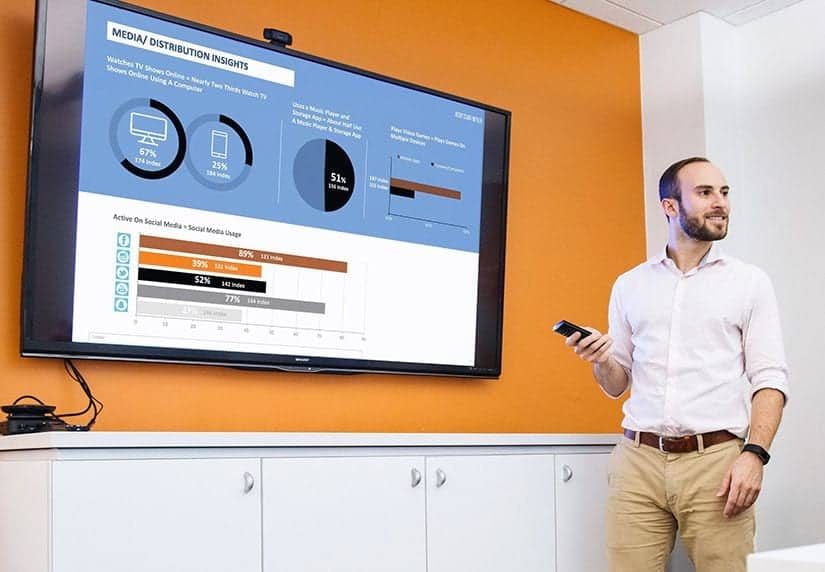What Does Browser Ad Blocking Mean for Users and Advertisers?
Browser Ad Blocking: Enhancing User Experience or Just Plain Scary for Advertisers? Currently, the big story in the browser wars is ad blocking...
In the ever-evolving landscape of search, voice activated search stands as one of the most significant trends in recent memory. Google recently announced that 20% of all Mobile searches are voice searches. According to comScore, 50% of all searches will be voice searches by 2020. These dramatic shifts in search behaviors leave search marketers wondering what they can do to prepare. Will we need to make drastic changes overnight or even in the next month? The short answer is no, but with the likelihood that this is an emerging trend in search, marketers will have to be quick on their feet to adapt to the coming changes in queries and maybe even search networks.
With the explosion of in-home voice assistants like Alexa and Google Home, users have

Image from Neurogadget
become more comfortable interacting with inanimate objects in their home. This has changed the way people use search functions. People ask Alexa to play music, request an Uber, participate in games and even order a pizza or groceries. Other virtual assistants or artificial intelligence, like chatbots, help users book flights, order flowers or even give tween girls advice. These days, even young children are growing up talking with “Alexa” and adding items to their parent’s grocery list, which can be extremely helpful
or very, very bad.
The growth of Virtual Assistants has paved the way for Voice Search, but there is still a long way to go. There is no one virtual assistant that can do it all. Alexa, Siri, Google Home and Cortana all have their own strengths and weaknesses. Most notably, Google Home and Alexa are more integrated into your home, whereas Siri and Cortana tend to travel with you via Mobile device.
For example, as of this article’s publishing date (they keep releasing new devices every week!), you can’t easily use Alexa outside of your home – in the car, on vacation (unless you want to stow her away in your luggage), or anywhere when you’re on the move. Instead, most people rely on their phones on the go, so they opt for help from Siri, Google Voice Search or Cortana. It is worth noting that Siri might have a slight edge on the others since she can pair with so many devices. However, there isn’t one, single platform of devices (*cough* Alexa *cough*) that can be integrated under Siri.
While existing devices are improving, consumer frustration is prevalent with almost all virtual assistants. There are limitations around what voice assistants can understand, such as users with heavy accents or questions structured in certain ways that AI finds complicated. Some examples of “basic” questions the assistants still don’t get right.
These limitations will likely be overcome in time, but until then, the mass adoption of virtual assistants is going to require that the AI can answer questions in the way users expect.
The most exciting thing about these personal voice assistants and the increased usage to search marketers? The data. The sheer amount of data that will be made available from voice search is staggering. Voice search provides another window into the behaviors, needs, habits and interests of consumers. Think about how you typically run a search on your phone or computer. Searchers usually type as few words as possible to initiate their query quickly. So, if someone is looking to book a hotel in Washington, DC for the weekend, they will likely search “Washington DC hotels.” However, through voice search, it is easy to add in more specifications, so they might ask “give me a listing of hotels near the medstar washington hospital in Washington DC”. In addition, the AI might know more about the searcher, such as where the hotel is booked, and what neighborhood it’s in without prompting from the user. This provides marketers with a great deal more information, specifically about intent and more specifically location. It is a win-win because it provides search marketers with more data on the user behavior, and it should provide better search results.
Most importantly, especially with chatbots, one-to-one marketing comes into play. Marketers will be able to speak directly to a user, not just a demographic of say, girls ages 11-13 in the United States. Instead, they will have a direct line to Jessica, age 12, from Montana who lives five miles from CVS and ten from Walgreens. Marketers can now adjust their strategies accordingly, delivering results and information that is specific and relevant to the user, rather than just an estimated guess based on a demographic. This allows us to drill down and provide targeted, relevant results to an individual, rather than a group.
We don’t have any actionable data currently, so it is hard to prepare in the present for what might be in the future for Voice Search. Google and Bing can’t give reports on how much of a campaign’s traffic is coming from Voice and it is not possible to target only Voice as a segment of a campaign. Hopefully, in the future we’ll be able to, but for now, the only thing to do is be creative.
If you’re able to get a good amount of traffic on your Voice Test, this can help you plan ahead for your direction in the future. For instance, if Amazon moves away from Alexa’s clunky “enabling skills”, airlines might want to consider buying paid search ads through Amazon to show up first for queries for “flights to Los Angeles.” Discovering the queries that tend to have higher traffic or performance through testing now can help provide direction on which ads to buy for Voice Search when we’re finally able to bid for it.

Browser Ad Blocking: Enhancing User Experience or Just Plain Scary for Advertisers? Currently, the big story in the browser wars is ad blocking...

Nervous that your brand’s Facebook videos are not getting the attention you’d like? You should be. The hard fact is, you have exactly 2.5 seconds to...

A Forrester Research analyst recently penned an open letter to Mark Zuckerberg, in which he claimed that Facebook is failing marketers, citing...